The new Genesis GV60 electric crossover will be offered with three power outputs, including a range-topping 429bhp all-wheel-drive performance model that will offer a boost drive mode.
The BMW iX3-rivalling crossover, which was first shown in August, is the new premium brand's first bespoke EV. Genesis brand boss Luc Donckerwolke said that, as its first dedicated EV, the GV60 "shows our commitment to electrification in terms of performance, design and innovative features".
One of eight battery-electric or hydrogen fuel cell models that Genesis will launch by 2030, the GV60 is based on the Hyundai Motor Group's advanced E-GMP architecture, which is also used by the Hyundai Ioniq 5 and forthcoming Kia EV6.
The E-GMP platform features an 800V electrical architecture, allowing for ultra-rapid 350kW charging, and can host both single- and dual-motor powertrains with a range of battery sizes.
While E-GMP models can be fitted with both 58kWh and 77.4kWh batteries, the GV60 will be offered with only the larger unit. Charging can be conducted as speeds of up to 350kW, allowing for a 10% to 80% charge in 18 minutes.
Genesis product boss Sean Lee said the GV60 has been designed to offer "comfort and luxurious driving performance" similar to previous combustion-engined Genesis models. The car is 4515mm long, with a wheelbase of 2900mm.
The entry-level GV60 will offer 226bhp from a single rear-mounted motor and a maximum range of 280 miles. There will be two twin-motor all-wheel-drive models, with a total output of 314bhp and 429bhp, and respective ranges of 248 and 229 miles. Both of those models deliver up to 446lb ft of torque.
The top-spec Performance model also offers a boost mode that delivers additional power for 10sec and enables it to achieve 0-62mph in 4.0sec. It also features what Genesis calls a 'hidden drift mode'.
Lee said the Performance model has been tuned to offer "a driving experience that is comparable to a sports car", although he insisted that does not compromise the "luxurious" performance of the model.
The GV60 uses MacPherson multi-link front suspension, with a five-link rear system. An electric limited-slip differential optimises torque distribution at high speeds and when cornering, and data gathered by the front camera is used to automatically adjust the electronic suspension.
A new electric 'active sound design' allows drivers to pick from three virtual driving sounds that will be played through the speakers and an active noise control function is used to minimise road noise.
The GV60 showcases a new evolution of Genesis’s design language, with the Two Lines lights at either side of a flush front end that features a revamped version of the firm’s logo. Genesis design chief Ilhun Yoon said the new styling is intended to highlight both "sustainable luxury" and "athletic elegance".
The lower portion of the front features a large grille that, Genesis says, is intended to both emphasise dynamic performance and improve the cooling of the high-voltage battery. There's also a single-panel clamshell bonnet.
The GV60 has an SUV-coupé side profile, with clean-lined bodywork enabled by pop-out door handles and digital wing mirrors. The C-pillars at the rear of the coupé roofline feature a new lighting bolt styling element, which will be used on all future electric Genesis models.
Inside, a twin-screen digital display dominates the dashboard, while a large central console houses both storage space and key vehicle controls, similar to the arrangement in the Ioniq 5 and EV6.
The GV60 also features a number of sustainable eco-friendly and recycled materials. These include seats and other interior trim elements made from plant-based imitation leather. The seat covers and door trims use yarn made from recycled plastic bottles.
Genesis has also put a major emphasis on technology to help increase the premium feel of the GV60. In markets where it is allowed, the car can be unlocked by a Face Connect camera in the B-pillar and started using fingerprint authentication. A digital key will be available and the car allows over-the-air software updates.
Genesis claims the car offers a "next-generation infotainment system", which can link "clusters" of data across the digital display and the head-up display.
The GV60 will sit below the GV70 and GV80 in Genesis's SUV line-up and will be the brand's second EV in the European market, following the electric version of the G80 saloon.
Genesis said the decision to use the GV nomenclature for its SUVs, rather than create a bespoke electric designation, was to highlight the firm's "commitment to its values".
Pricing information has yet to be disclosed.
READ MORE


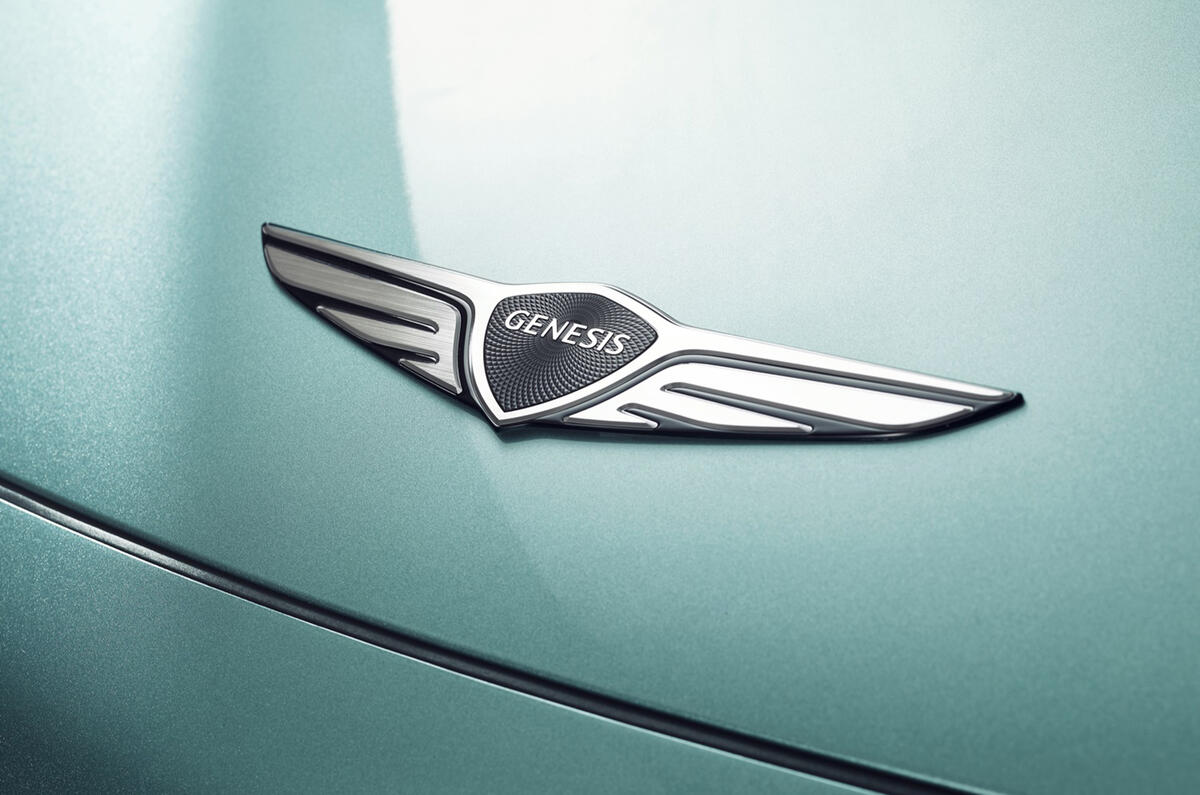


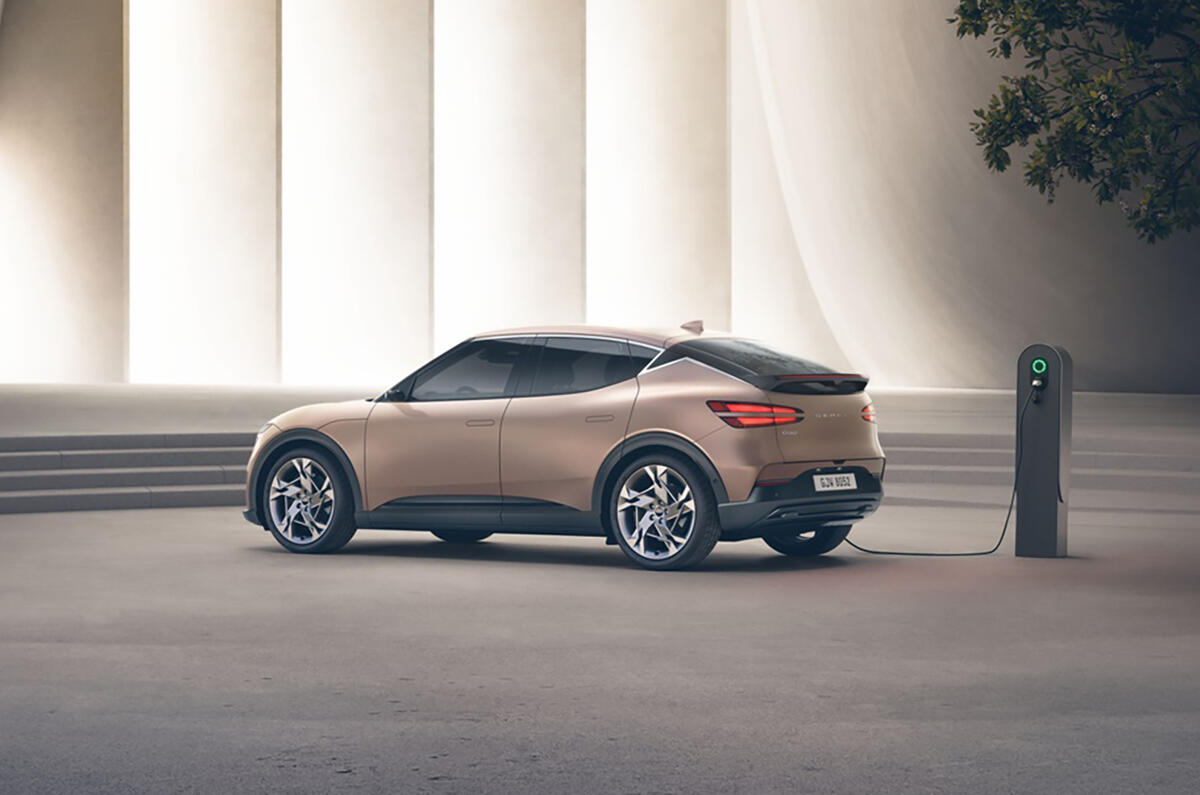
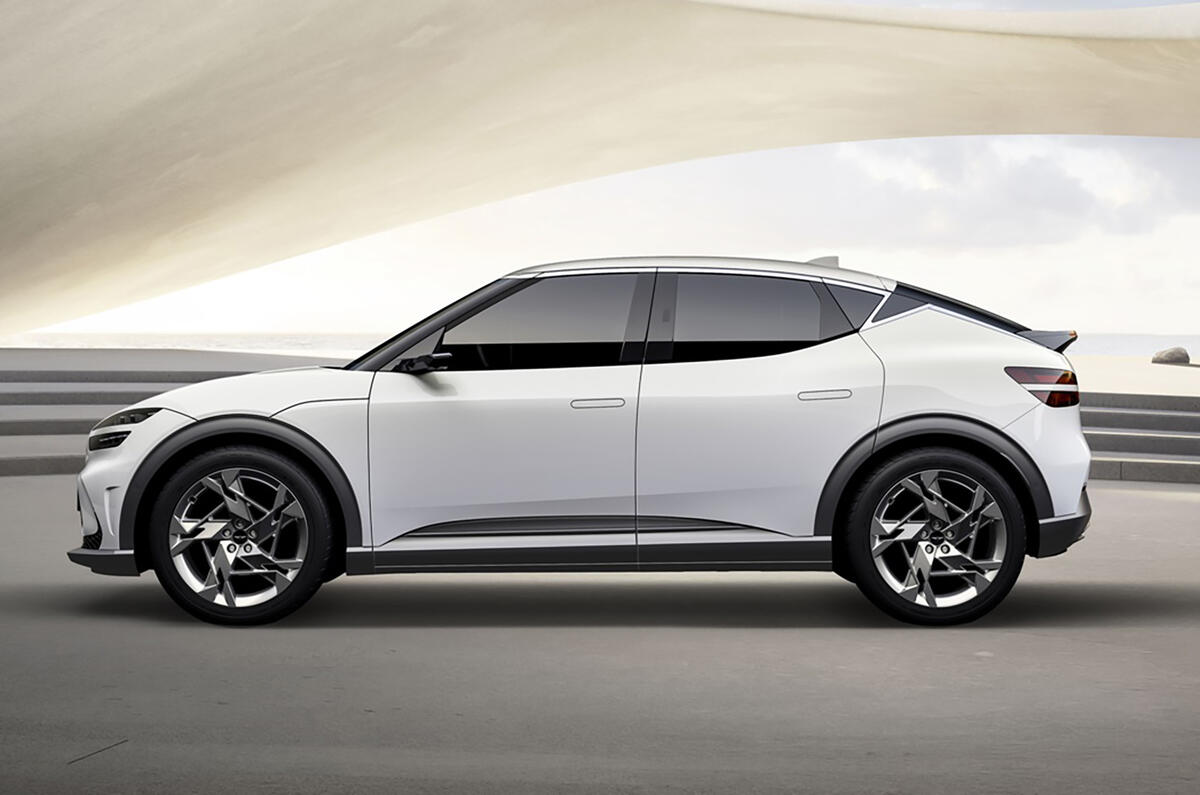
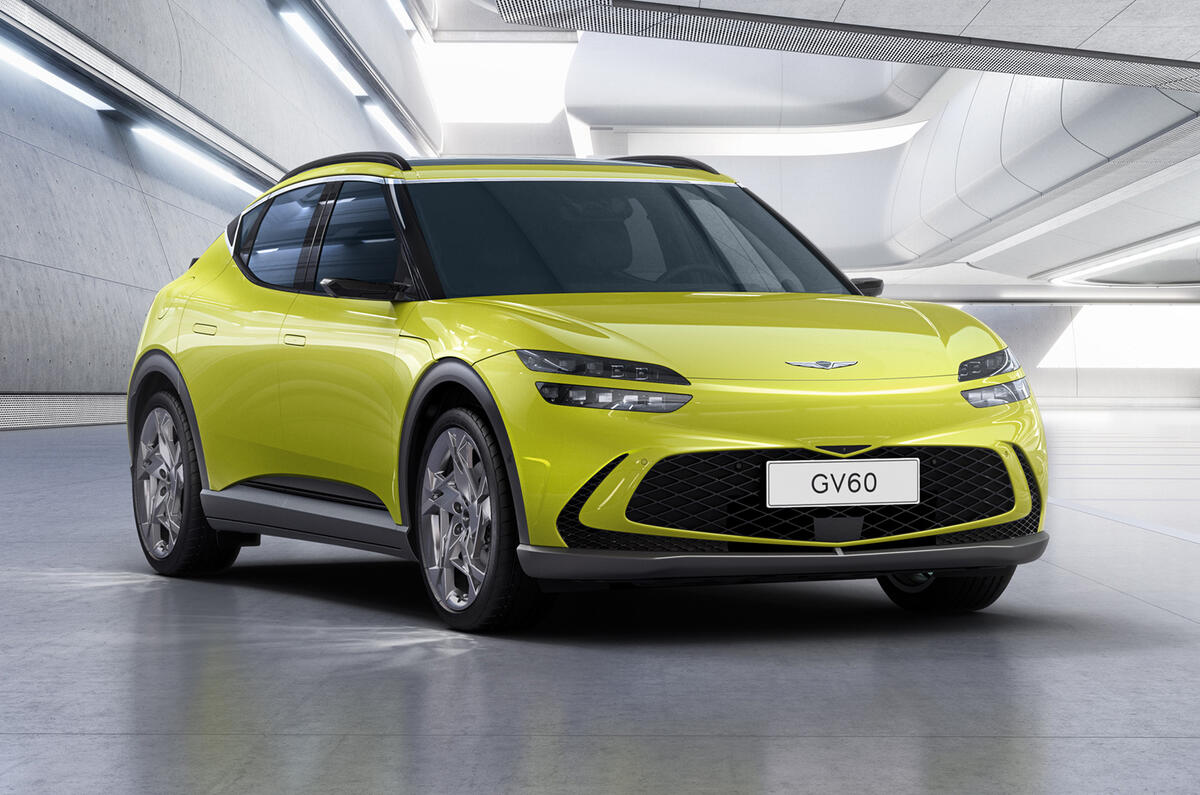
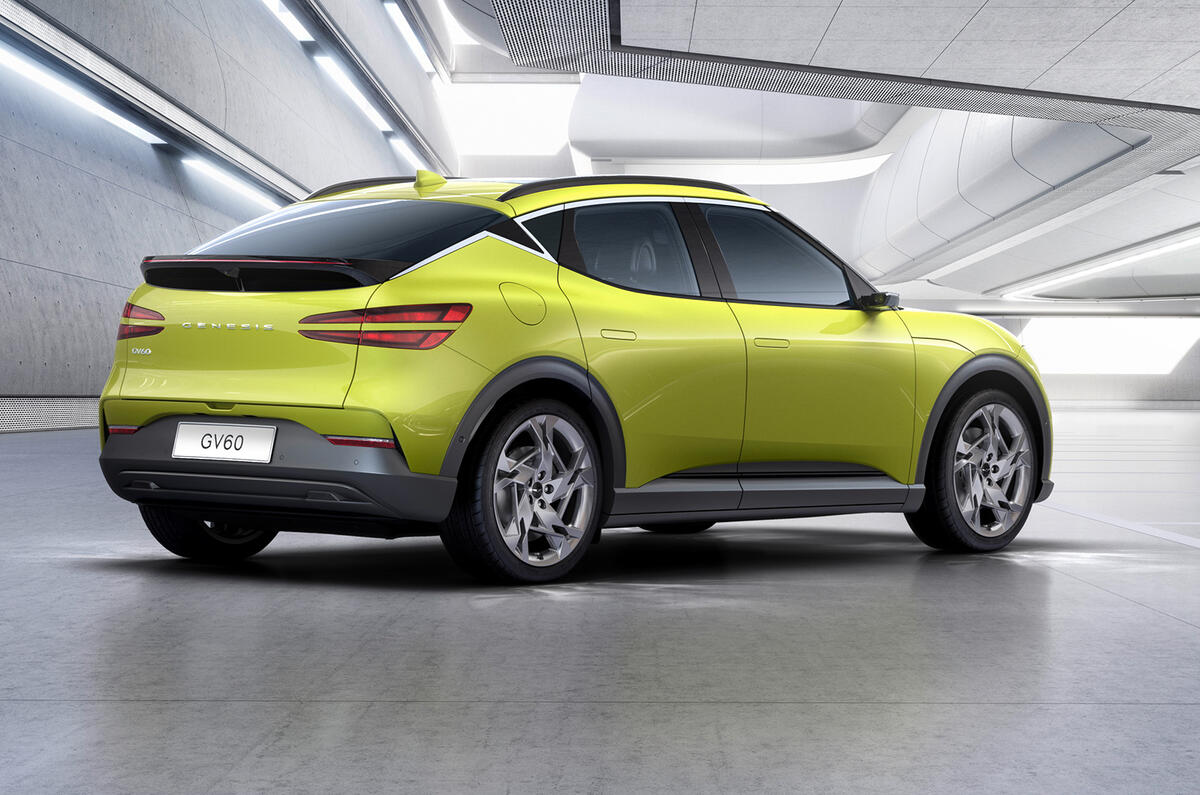
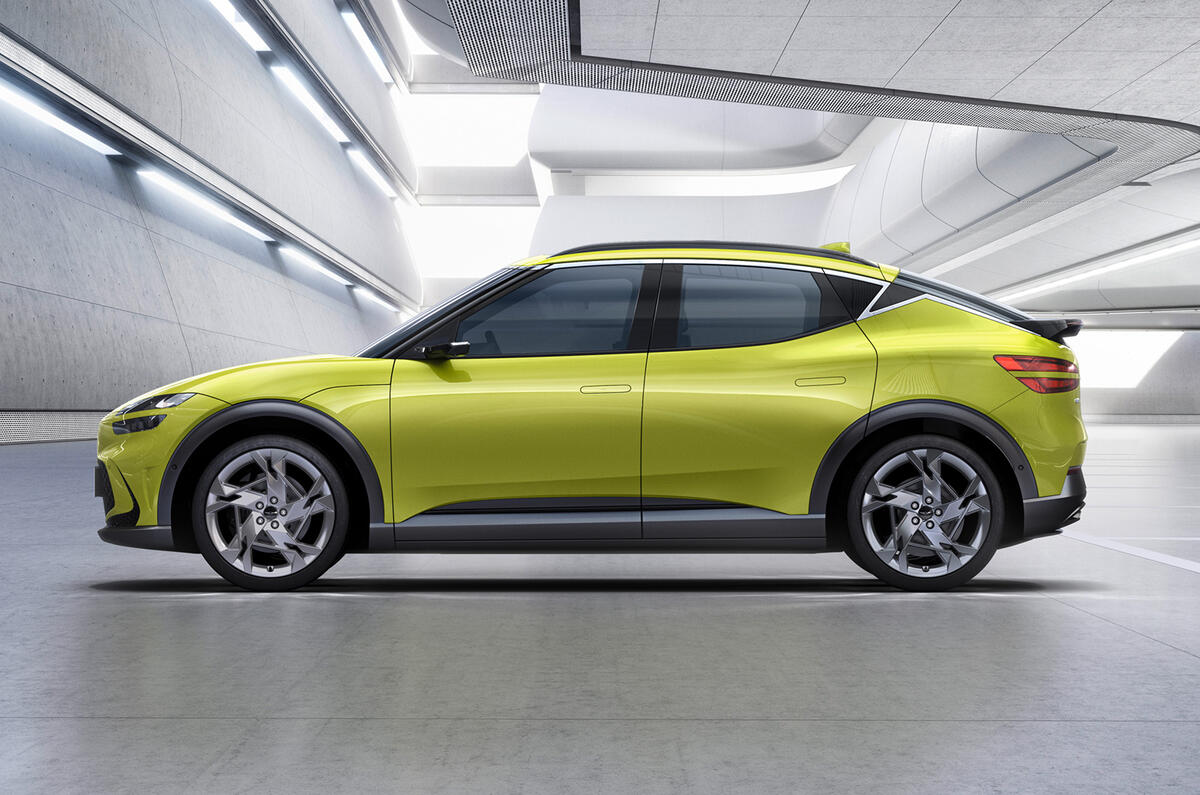
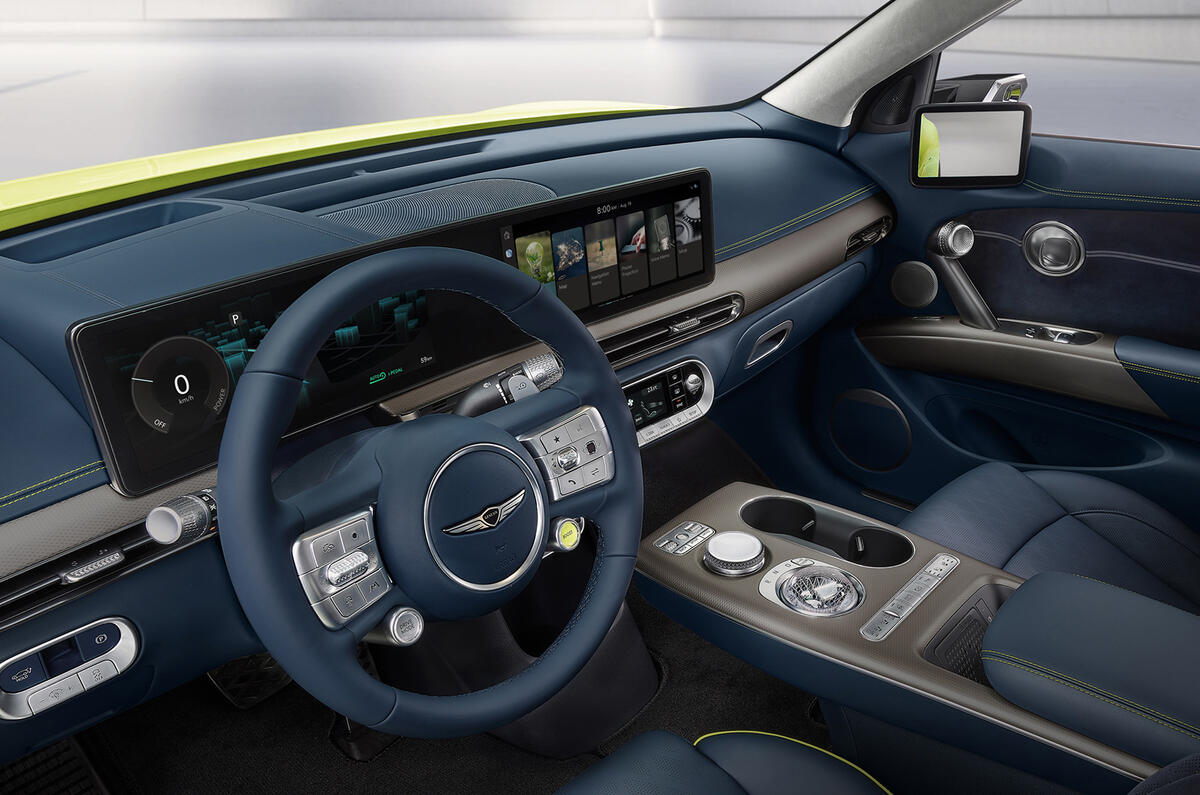






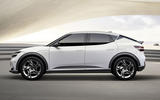



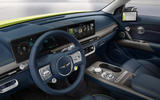
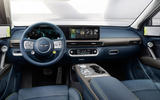








Join the debate
Add your comment
YET ANOTHER POINTLESS E-SUV!
Nothing more needs saying
£55k for this ugly hyundai korean junk? they should focus less on trying to 'beat the Japanese' with copycat crap and build nice cars.
it looks like a generic car you see in GTA
A maximum range of 280 miles, for the so-called range topper, just isn't enough.